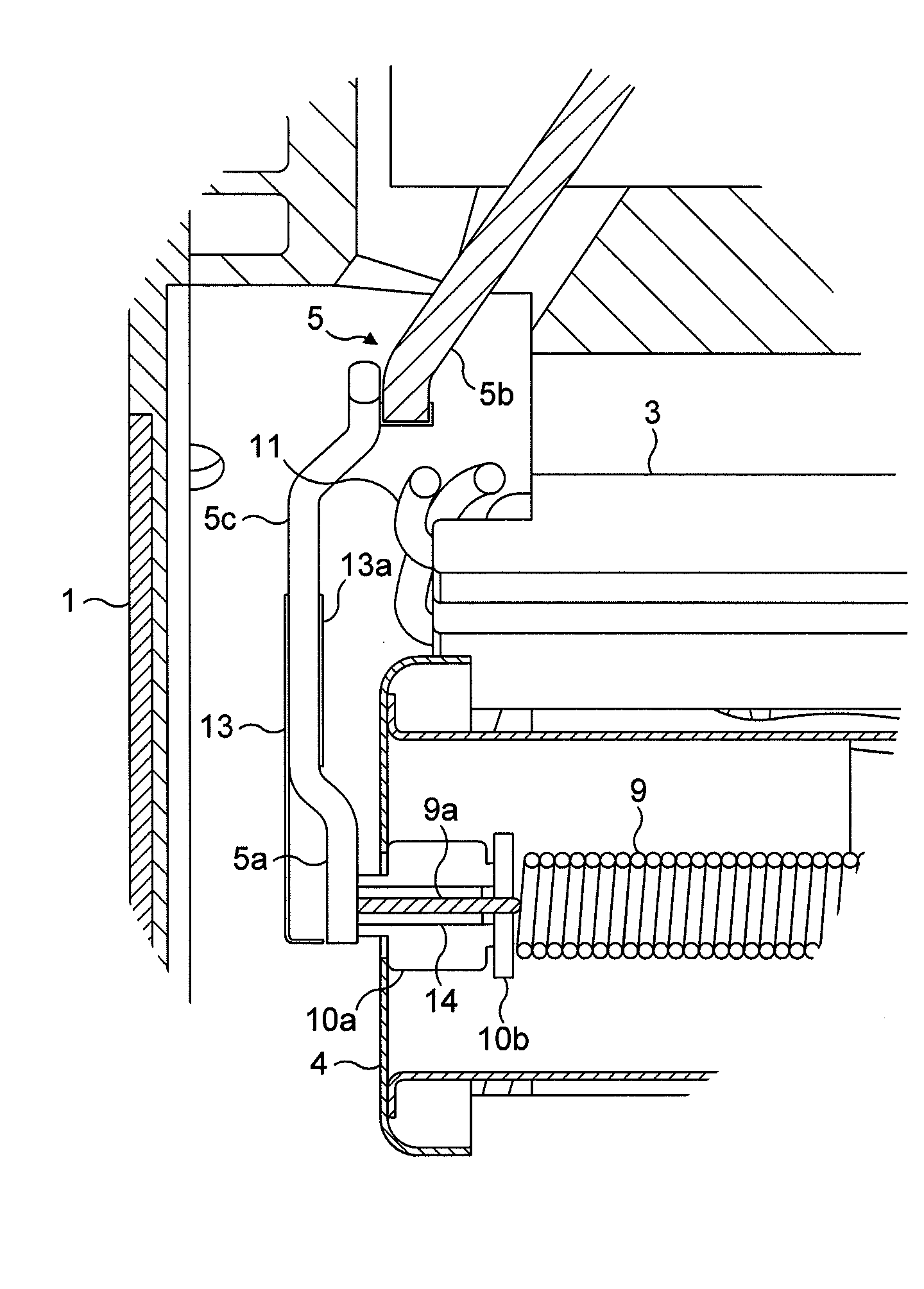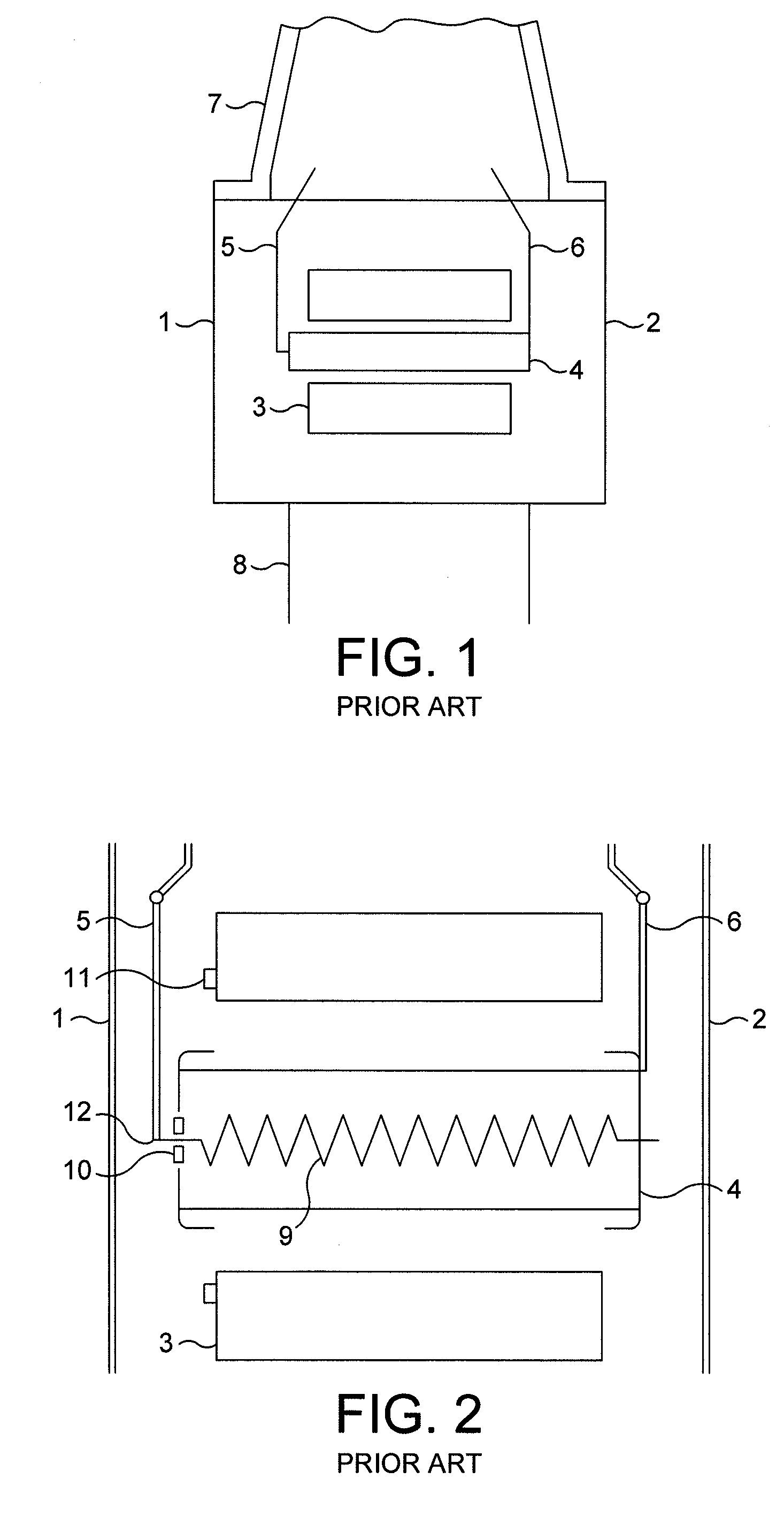Magnetron
a magnet and magnetron technology, applied in the field of magnets, can solve the problems of increasing the risk of perforation, insufficient, serious consequences, etc., and achieve the effect of reducing the voltage stress
- Summary
- Abstract
- Description
- Claims
- Application Information
AI Technical Summary
Benefits of technology
Problems solved by technology
Method used
Image
Examples
Embodiment Construction
[0020]The invention can best be appreciated by considering FIGS. 3 and 4 in conjunction with FIG. 2, which show a modification made in accordance with the invention to the known magnetron. By comparing FIG. 3 with FIG. 2, it will be seen that, the support arm 5 is provided with a region 5a which is offset towards the cathode, so that the connection point 12 between the heater and the support arm 5 is displaced nearer to the cathode than in the prior art magnetron. In addition and in accordance with the invention, a cover 13 of conducting material is interposed between the connection point 12 and the adjacent end wall 1 of the vacuum chamber. The cover is made of nickel, or a nickel alloy, but other conducting materials could be used if desired. The region of the arm 5 over which the cover extends is in fact formed by two closely spaced conductors, which diverge in the region of connection point 12 to make the connection to the end of the heater easier. The upper end of the cover is ...
PUM
 Login to View More
Login to View More Abstract
Description
Claims
Application Information
 Login to View More
Login to View More - R&D
- Intellectual Property
- Life Sciences
- Materials
- Tech Scout
- Unparalleled Data Quality
- Higher Quality Content
- 60% Fewer Hallucinations
Browse by: Latest US Patents, China's latest patents, Technical Efficacy Thesaurus, Application Domain, Technology Topic, Popular Technical Reports.
© 2025 PatSnap. All rights reserved.Legal|Privacy policy|Modern Slavery Act Transparency Statement|Sitemap|About US| Contact US: help@patsnap.com



